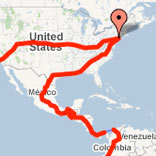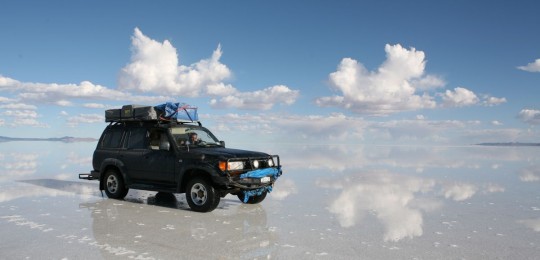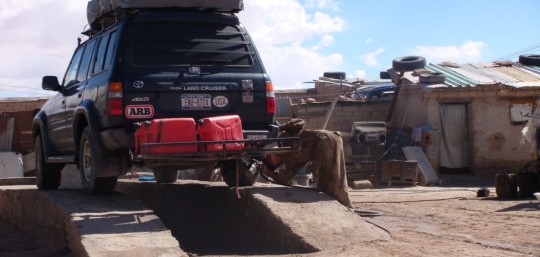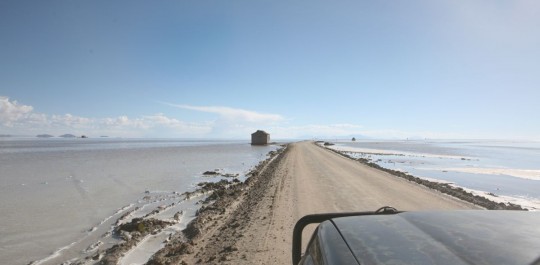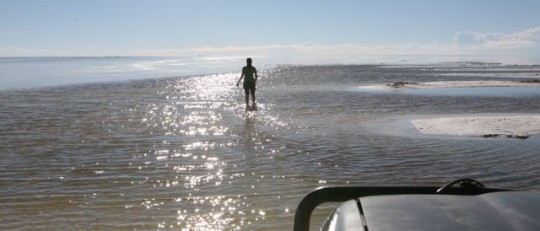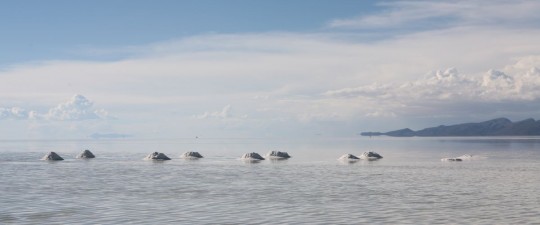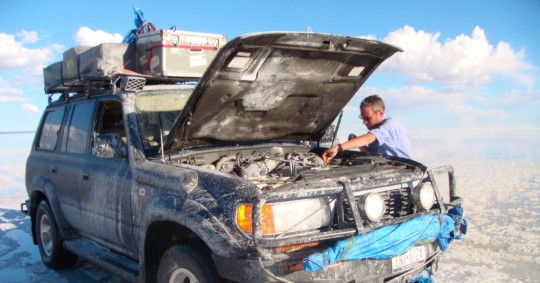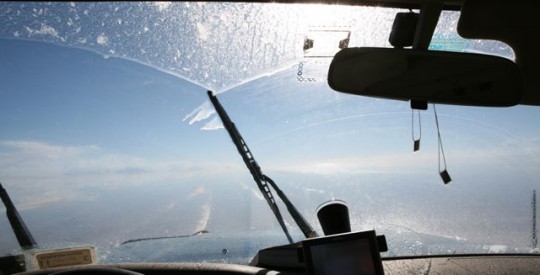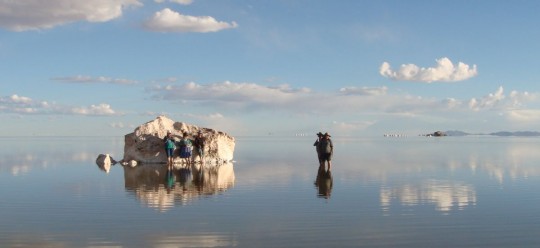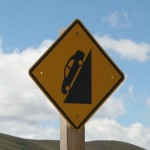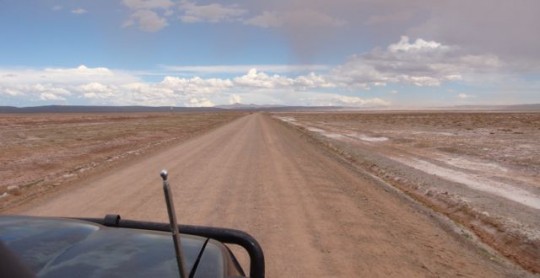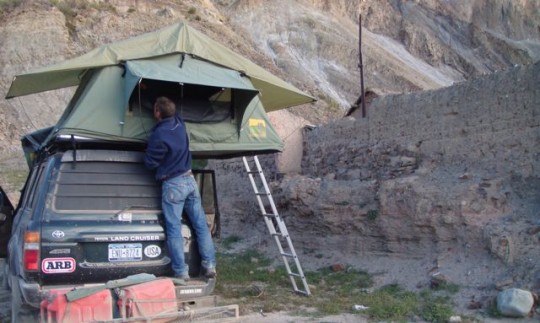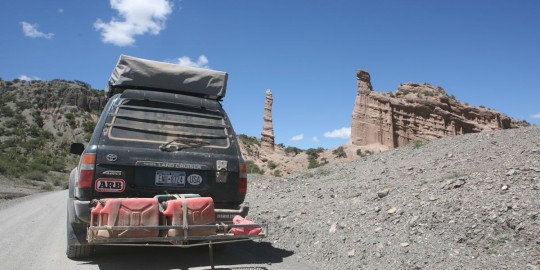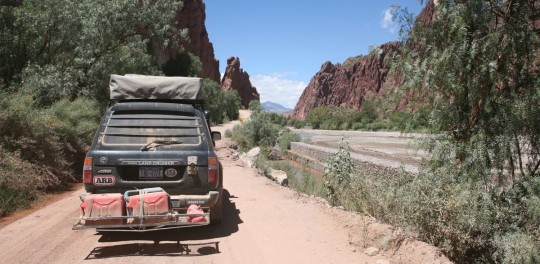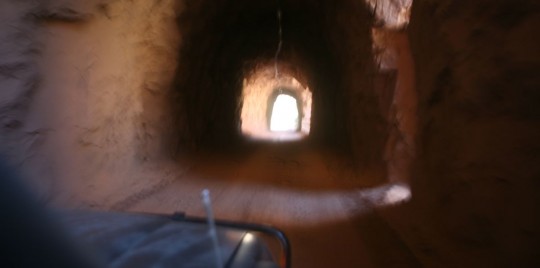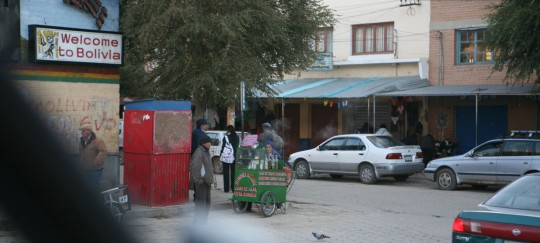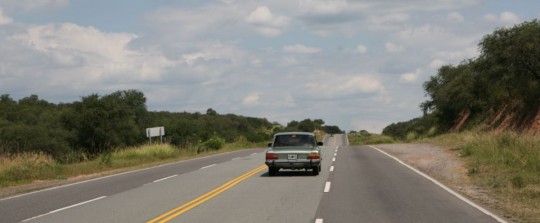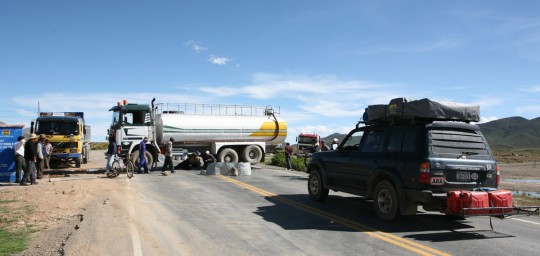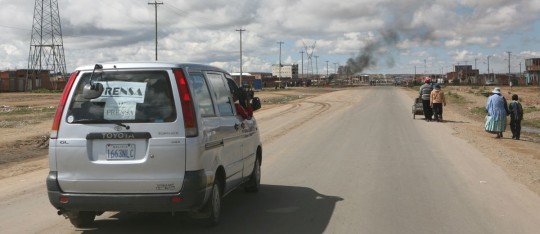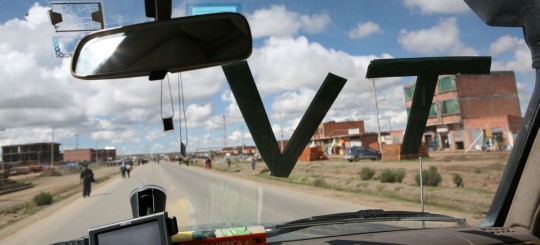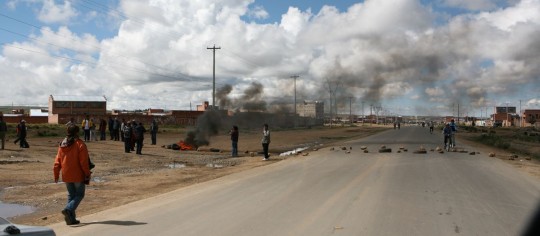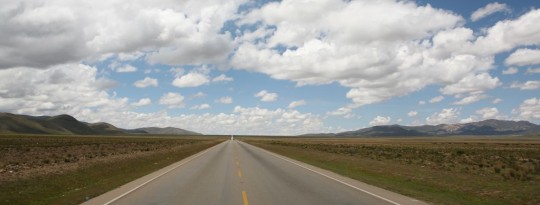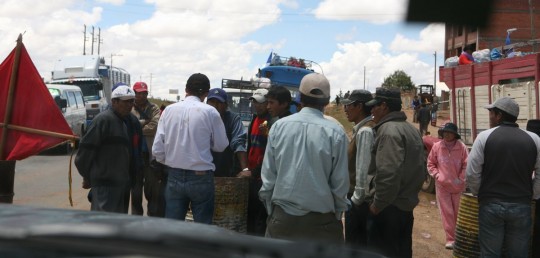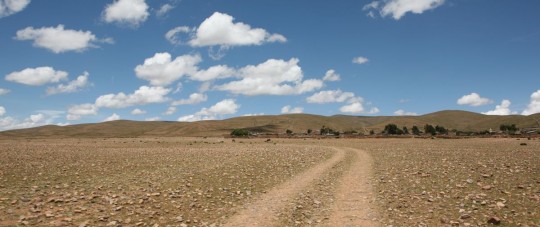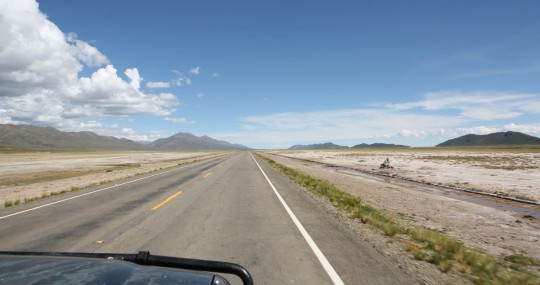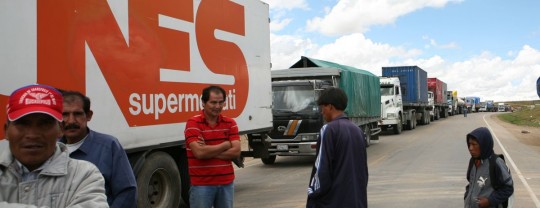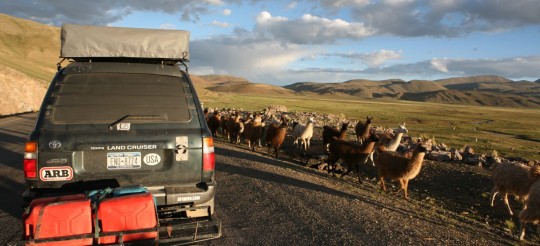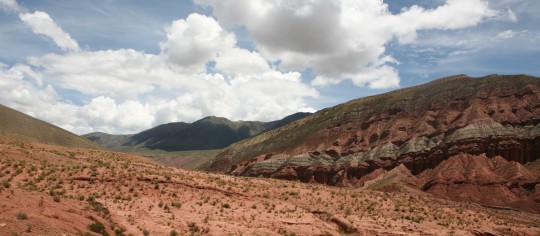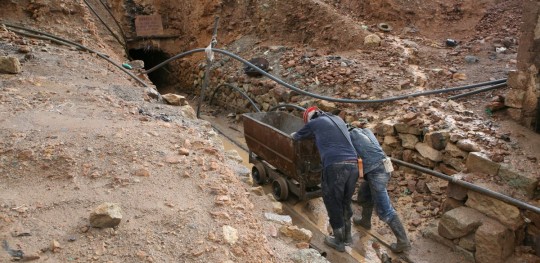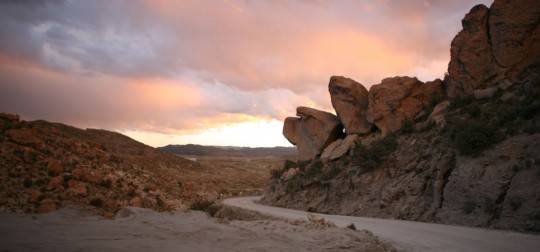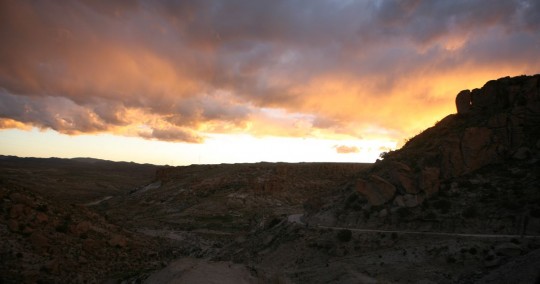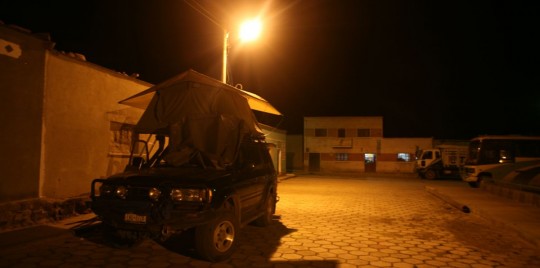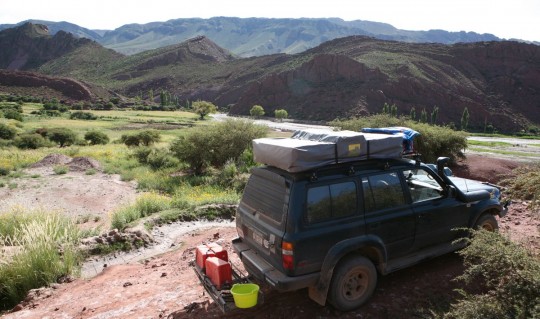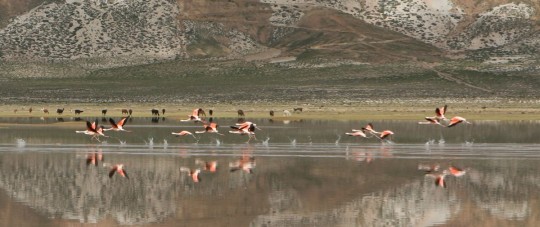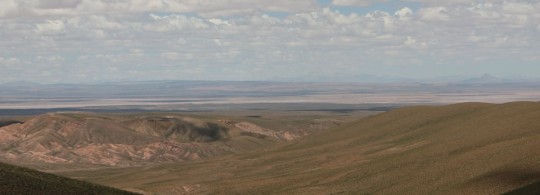- Home
- About Nick
- Maps
- People helping the expedition
- Expenses breakdown
- Truck and equipment (Sept. 16)
-
Beautiful roads of Bolivia
When we arrived in Uyuni, I was relieved to be done with the long 250km dirt road coming from Potosi. Little did I know the Bolivian roads kept more surprises from me.
We stopped in the town to get lunch and immediately after, went to get the truck ready for our trip to the saline.Before you enter this super salty area, you are supposed to get the engine and the lower part of the truck sprayed with a mixture of oil and diesel to avoid electrical shortcuts and rust, which we did.
We planned on staying few days in the saline, and got all the drinking water we could. We wanted to go 100 km deep in, and spend at least two nights there.The dirt road to the saline entrance was even worst than the ones we previously used. It sounded like the truck could brake in parts at any moments. Frankly, at this point, driving was not relaxing. There was a last military checkpoint at the entrance where we let our plate numbers and names, in case we disappeared, I gather.
At first, the road was a bit higher than the water and salt level, but after five kilometers, we were driving on the salt, and there was 30-centimeters of water on top.It was pretty scary to drive on this unknown material, as at first, you can’t help but be afraid you will get stuck in the soft white substance. But salt is pretty hard, and we gained confidence quickly. Toward the entrance, some people with trucks were collecting salt, and watching us go by.
The only annoying thing is that there was way too much water on this saline. It probably rained a lot in the previous day, and as we were advancing, water level was going higher. We could not go faster than 30km/h (20mph), and even at this speed, we got salty water splashing above the rooftop. We knew that it is better to visit the saline when there is water, to witness the reflection of clouds and mountains, but how could it be an enjoyable experience in these driving conditions?
Finally, I noticed my oil pressure was going dangerously high. I stopped to check the engine and fluid levels. Under the hood, it was salty as salami. The engine was lacking oil, which was strange, as I was checking the levels almost every morning.
I topped off the fluid with what was necessary and started again the truck. This time, the pressure was at the lowest possible. I really started to not like the situation. I drove a bit more, and soon, the dashboard began to look like a Christmas tree. Now there was a light on for the automatic transmission oil temperature, a blinking ‘overdrive off’, and the oil level was stubbornly at its lowest level.
At this point, the electronic was driving loco. I would not care much about it, except it looked like the systems was sending erroneous messages to the engine, which was burning too much oil. So after 20 km on the saline, I decided to turn back to Uyuni, get an engine wash, and see what was up.
Taking back the bad dust road to town and checking the oil level every kilometer, I made it back without problem. The engine temperature was stable, which somewhat helped me trust that the way the engine was working was fine. It was night now, and we took a room in a depressing and dark hotel.
The following day, I got an engine and car wash, which didn’t change the way my dashboard was acting. To date, it still has the problem, and I am still trying to troubleshoot it.
The previous night, I spoke to a guy whose work it was too bring tourists to the saline, and he told me what everybody, including the military failed to let us know. There was way too much water on the saline, and all the popular tourist tours there were canceled, or replaced by a simple visit of the site entrance.
Discouraged, we decided to not go back on planet salt. What we imagined we would do next was to visit the colored lagoon southwest of the town, on the road to Chile. From Chile, we would have reach Argentina and continued our trip. But the guide also told us the road there was simply terrible, worst than the ones we used until now.That would have been three days of terrible roads, in a truck I was not sure was working well.
So we opted for another solution. Going southeast by a dirt road that was supposed to be in better shape, and in two days we would be in Argentina, via the Villazon border crossing. The only other solution we rejected would have been to go back to Potosi, and do something I hate and never did so far. Backtrack.
So after our car wash, we were on our way to Argentina. Always careful, of course, I kept checking the oil level and engine temperature, promising myself to stop in a Toyota garage in Argentina.After driving few hours, we spent the night in front of a hospital in Atocha. In the morning, we continued our trip on the long dirt road. Altogether, when I will reach the Argentinean border, I would have been on dirt roads for 500km.
But the scenery along the way from Potosi to where we were now had been exceptional. At the end, I was not too sad I spent so little time on the saline, and didn’t see the colored lagunas. It was still a great time to have.
The goal was now to arrive to the border before night. There, we will replenish in water, gasoline and everything we could, as Bolivia was certainly cheaper than Argentina.
It was still daytime when we arrived there. I rushed to buy some cigarettes (US$ 0.70 a pack!) and we were in line for some paperwork action. Checking out of Bolivia, canceling vehicle importation, migration in Argentina, and everything looked good for us while we were walking toward the Argentina customs.
Unfortunately, it was written we would not be able to enjoy the legendary steaks on the night of March 7.
As we were traveling across all Central and South-American countries, we got used to not worrying about car insurance and other papers that are so important back in Europe or in the U.S. We were driving down the road with no worries, and cops along were satisfied with whatever papers we would show them. Down there, a New York City library card would become a life insurance card, and a subway card and international car insurance.
In Argentina, it was different. Welcome back to more rigorous laws. They would not let us through without a paper stating we were covered in the country. It was not looking good for my steak.
Because it was Sunday, there was no way of getting this insurance proof before the following day. So at the end, they just kicked us out of the country. Only for few minutes. On the Bolivian side, the law was stating that to re-enter the country you have to spend at least 24-hours outside. It looked like we would have to spend the night on the bridge between the two countries.Bolivia was the first country to make a move to solve what was taking the direction of an international dispute, and allowed us to sleep on the custom parking on their side. I was glad we had a solution before Argentina sent the artillery. The parking was attracting some dubious characters, so we slept in the truck. To avoid being stabbed in the face.
In the morning, I crossed the border by foot, and went in an insurance office where I purchased liability coverage for US$40. I went back at the border, and an hour after, we were able to go through.And there, as soon as we passed the border, we were back on exceptional roads. Good-bye cheap gasoline, we are now back in the modern world, with its good and bad sides…
-
Strike!
In the morning, we go get the car and we begin to drive out of the city. We eared previously it was the first day of a two-days nationwide blockade. Drivers of the whole country are upset. The government wants to pass a new law making it harder to drive under alcohol influence. They want to drive and drink, and they will block the whole country so everybody will know.In the city, streets are emptied of cars, as most people know it’s better to not move today. Regardless, we come out of the valley where La Paz lays, and we drive south. Protesters did put sprayed a lot of rocks on the road, and we slalom between them. Soon enough, we found our first barrier, just outside of the city.In the morning, we go get the car and we begin to drive out of the city. We eared previously it was the first day of a two-days nationwide blockade. Drivers of the whole country are upset. The government wants to pass a new law making it harder to drive under alcohol influence. They want to drive and drink, and they will block the whole country so everybody will know.
In the city, streets are emptied of cars, as most people know it’s better to not move today. Regardless, we come out of the valley where La Paz lays, and we drive south. Protesters did put sprayed a lot of rocks on the road, and we slalom between them. Soon enough, we found our first barrier, just outside of the city.
There, we meet with reporters from La Prensa, the biggest Bolivian newspaper. They are going south, and taking pictures and videos of the protests. Because they are press, protesters let them through the barrages.
Soon enough, we are part of their convoy. With electrical tape, I mark the word TV on the windshield, and to all, we are American TV going through.
The day is long, and at every town, we have to negotiate our passage. But little by little, we advance south toward Potosi. We are back in the Pampa, and outside of towns, we can go fast in endless straight lines.
Because of cheap gas, I authorize myself to go above the speed limitation I usually follow.
Sometimes, people would not let us go through, so we have to take dirt roads around towns, with scary river crossing once in a while.
There’s a lot of salt in the surrounding landscape, which is a preview of one of our upcoming destination, the Uyuni Salar.
Finally, after spending an hour blocked at a last barrier, be go into the mountains where people could not care less – or don’t know about – what’s going on in the lowlands.
As sun goes down and night arrives, we continue on our way, wanting to make it to a stop Coen spoke to us about the previous day. Our goal is the site of hot springs north of Potosi where we knew we could camp.
We arrived there around 8:30 p.m., and a lady let us go in for few dollars. We camp on a basketball court and go to sleep, tired after the 500 km (310 mi.) we were able to put behind us today.
In the morning, Nadia takes advantage of the hot springs, while I work on photos and inspect the truck. We drive the 20 km (12 mi.) to Potosi and go to the market there. We have a lot of desert to cover in the next few days, so we need to buy plenty of food and water to be able to make it.
In the afternoon, we go visit the infamous Cerro Rico mines, where during the colonial period, as many as eight millions Indians and Africans died from the terrible work conditions.
The next step is the Uyuni Salar. We leave Potosi late in the day, but have read that there is a new road to Uyuni. Well, it is true that there’s a new road, but only for the few first miles. After that, it is 250 km (155 mi.) of dirt road.
But we are not disappointed. The road is beautiful, and crosses surreal landscapes. At the end, after nightfall, we stopped on the main plaza of a town where road workers sleep at night. They are very nice, and let us stay close to one of their dormitories, protected from the wind.
In the morning, we resume our journey toward Uyuni. After two hours, when it gets warmer, we stop to wash the dirt out of us. Soon we are back on the dirt road, for the long stretch to our destination.
As we advance, the road gets worst. Dust and sand are everywhere in the truck. We drink plenty of water but still are as dry as the desert itself.
But at midday, we pass a last mountain, and get a view of Bolivia largest saltpan. The huge Salar de Uyuni was in front of us.


